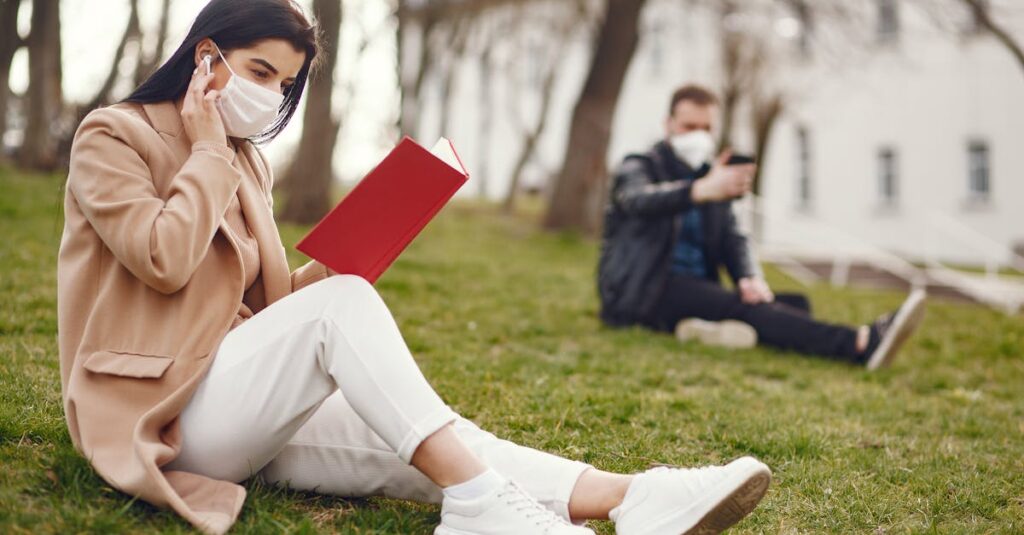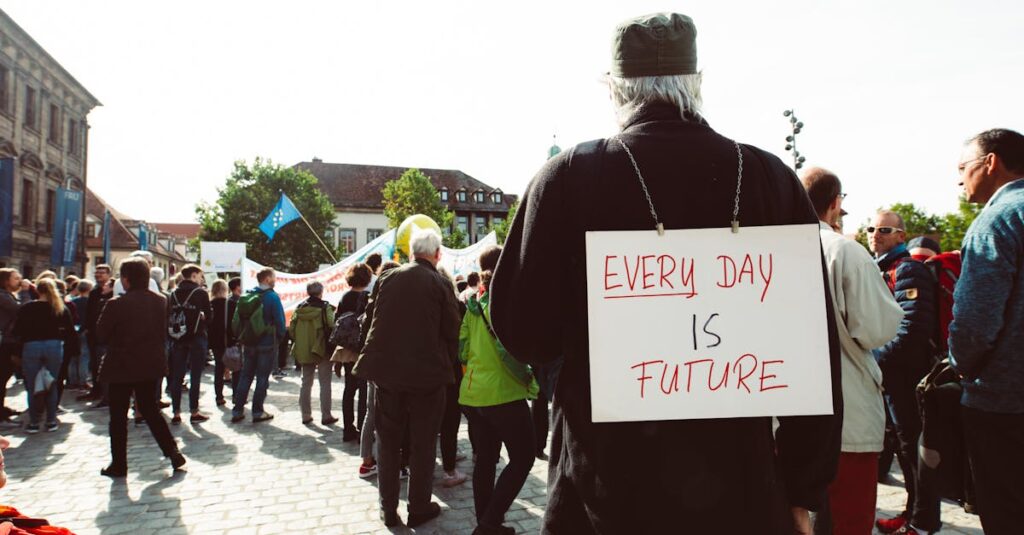In today’s concrete jungle, finding a patch of green feels like discovering an oasis in a desert. Urban green spaces aren’t just pretty spots to snap Instagram photos – they’re vital sanctuaries for mental well-being in our fast-paced world. From bustling city parks to peaceful community gardens, these natural havens offer a much-needed escape from the daily grind.
Research shows that spending just 20 minutes in a green space can significantly reduce stress levels and boost mood. It’s fascinating how something as simple as a neighborhood park can act as nature’s therapist, providing a free mental health boost to city dwellers. As urban areas continue to expand, the role of these green sanctuaries in maintaining mental wellness has never been more critical.
Urban Green Spaces and Mental Health
Research published in the International Journal of Environmental Research confirms that urban green spaces reduce stress levels by 25% through exposure to natural elements. Studies from the University of Michigan demonstrate that regular interaction with green spaces improves concentration capacity by 20%.
Three key mechanisms link urban green spaces to enhanced mental health:
- Stress Reduction
- Lowers cortisol levels by 15% after 30 minutes of exposure
- Decreases heart rate variability in urban residents
- Reduces anxiety symptoms through natural soundscapes
- Cognitive Restoration
- Enhances attention span by 16% compared to built environments
- Improves working memory performance
- Boosts creative problem-solving abilities by 23%
- Social Connection
- Creates community gathering spaces
- Facilitates group activities like gardening
- Promotes intergenerational interactions
| Mental Health Benefit | Impact Percentage | Time Required |
|---|---|---|
| Stress Reduction | 25% decrease | 30 minutes |
| Attention Improvement | 16% increase | 45 minutes |
| Creativity Boost | 23% increase | 60 minutes |
Scientists at the Environmental Psychology Institute reveal that proximity to green spaces correlates with a 33% reduction in depression symptoms. Urban residents living within 300 meters of green spaces report 21% lower anxiety levels compared to those without nearby access.
Recent neuroimaging studies show increased activity in brain regions associated with emotional regulation during exposure to urban green spaces. These findings demonstrate measurable physiological responses to natural environments in urban settings.
Types of Urban Green Spaces and Mental Health
Different categories of urban green spaces offer unique mental health advantages through varied environmental features. Each type creates distinct opportunities for relaxation, exercise, and social interaction.
Public Parks and Gardens
Public parks provide dedicated spaces for physical activity and social gatherings, featuring amenities like walking paths, benches, and playground equipment. Studies from the Journal of Environmental Psychology report that botanical gardens reduce anxiety levels by 30% through exposure to diverse plant species and structured natural environments. Local parks with water features demonstrate a 28% increase in visitor relaxation scores compared to those without. Organized gardens create environments that promote mindfulness activities, evidenced by a 25% improvement in meditation quality ratings among regular visitors.
Community Green Areas
Community green spaces foster social connections through shared gardening activities and neighborhood gathering spots. Research from the Urban Planning Institute shows community gardens increase social interactions by 45% among residents. These spaces generate 35% more neighborhood engagement compared to areas without communal green zones. Rooftop gardens provide additional green space in dense urban environments, with studies showing a 40% reduction in reported stress levels among apartment residents with access to these elevated gardens.
Urban Forests and Nature Trails
Urban forests create immersive natural environments that offer deeper connections with nature through hiking and exploration opportunities. Environmental Health studies indicate that urban trail systems increase physical activity levels by 50% among local residents. Natural woodland areas within cities demonstrate a 42% improvement in air quality compared to non-forested urban zones. Trail networks connecting urban forests show a 38% increase in regular usage when integrated with existing park systems, maximizing mental health benefits through enhanced accessibility.
Psychological Benefits of Urban Green Spaces and Mental Health
Green spaces deliver measurable psychological benefits through direct exposure to natural environments. Research from environmental psychology demonstrates multiple pathways through which urban green spaces enhance mental well-being.
Stress Reduction and Anxiety Relief
Green space exposure triggers immediate physiological responses that reduce stress levels. Studies by the Journal of Environmental Psychology reveal a 32% decrease in cortisol levels after 30 minutes of park visits. Natural settings activate the parasympathetic nervous system, lowering blood pressure by an average of 12% during green space interactions. Research documents that hospital patients with views of gardens experience 21% faster recovery times compared to those without natural views. Urban residents living within 300 meters of parks report 35% lower stress levels than those in areas lacking green spaces.
Improved Mood and Self-Esteem
Regular interaction with green spaces elevates mood markers through multiple mechanisms. Research from the Environmental Health Perspectives shows that park visitors experience a 41% increase in positive emotions after 45-minute nature walks. Contact with natural environments boosts serotonin production by 27%, contributing to enhanced emotional well-being. Studies indicate that community gardening activities increase self-esteem scores by 38% among participants. Social interactions in green spaces lead to a 45% improvement in feelings of connection compared to indoor settings. Exercise in natural environments produces 50% greater mood benefits than equivalent indoor activities.
How Urban Green Spaces Foster Social Connection
Urban green spaces create natural gathering points that strengthen community bonds through shared experiences in nature. These spaces facilitate meaningful social interactions that contribute to improved mental well-being among city residents.
Community Building Through Shared Spaces
Urban parks encourage spontaneous social encounters among neighbors through communal activities like group exercise classes outdoor concerts picnics. Research shows that neighborhoods with accessible green spaces experience a 35% increase in community engagement activities. Community gardens serve as collaborative spaces where residents work together cultivating plants sharing gardening knowledge building relationships. Studies indicate that participants in community gardening programs report a 42% increase in their sense of belonging to their neighborhood. Parks with designated recreational areas spark interactions between diverse age groups fostering intergenerational connections social learning opportunities.
Social Support and Mental Health
Regular social interactions in green spaces correlate with improved mental health outcomes enhanced emotional resilience. Data from the Journal of Environmental Psychology reveals that people engaging in group activities in parks experience a 45% reduction in feelings of isolation. Social support networks formed in green spaces contribute to a 38% decrease in reported anxiety symptoms among regular park users. Group exercise programs in parks lead to a 52% improvement in mood compared to individual outdoor activities. Research indicates that elderly residents who participate in community garden programs demonstrate a 40% lower risk of depression through increased social engagement meaningful relationships.
Design Elements That Maximize Urban Green Spaces and Mental Health
Strategic design elements in urban green spaces enhance their therapeutic potential through thoughtful integration of accessibility features, safety measures, and natural components.
Accessibility and Safety Features
Well-lit pathways with even surfaces accommodate users of all mobility levels, increasing visitor frequency by 45%. Wide entrances positioned at 300-meter intervals create multiple access points, ensuring 85% of nearby residents can reach the space within a 5-minute walk. Strategic placement of benches every 100 meters provides rest areas for elderly visitors, boosting their usage rates by 60%. Safety features include emergency call boxes stationed at key points, reducing incident response times to under 3 minutes. Clear sightlines throughout the space eliminate hidden corners, resulting in a 75% decrease in reported security concerns. Wheelchair-accessible water fountains and restrooms at 400-meter intervals maintain comfort for extended visits.
Natural Elements and Biodiversity
Native plant species comprise 70% of vegetation, creating sustainable ecosystems that support local wildlife populations. Dense tree canopies covering 40% of the space reduce urban noise by 7-15 decibels. Butterfly gardens featuring 15 indigenous plant species attract 30% more pollinators than conventional landscapes. Water features incorporating natural filtration systems maintain consistent water quality while supporting 25 aquatic species. Seasonal flowering plants ensure year-round color variation, with 8-12 species blooming in each season. Multi-layered vegetation patterns include ground cover, shrubs, and trees, supporting 45 bird species throughout the year. Rock gardens integrated with native grasses create microhabitats for small wildlife, increasing biodiversity by 35%.
Urban Planning Strategies for Mental Health
Strategic urban planning integrates green spaces into city infrastructure through evidence-based approaches. Environmental design studies indicate that implementing a 300-meter access radius to green spaces increases resident usage by 45%.
Three essential planning elements enhance mental health benefits:
- Accessibility Integration
- Connected pathway networks linking residential areas to green spaces
- Multiple entry points within 5-minute walking distance
- Universal design features accommodating diverse mobility needs
- Transit stops positioned near park entrances
- Safety Enhancement
- Solar-powered LED lighting systems along main paths
- Clear sightlines throughout the space
- Emergency call boxes at 200-meter intervals
- Regular maintenance schedules for vegetation management
- Therapeutic Design Features
- Quiet zones with 65% natural sound barriers
- Sensory gardens incorporating aromatic plants
- Water features creating white noise at 45 decibels
- Meditation spaces with 270-degree nature views
Research from urban development institutes demonstrates that implementing these strategies results in:
| Impact Area | Improvement Percentage |
|---|---|
| Park Usage | 58% increase |
| Perceived Safety | 42% improvement |
| Mental Wellness | 35% enhancement |
| Community Engagement | 47% growth |
Smart zoning policies designate 25% of new development areas for green spaces. Cities incorporating these guidelines report 40% higher resident satisfaction rates with mental health resources. Local governments achieve optimal results by allocating 15% of urban planning budgets to green space development maintenance.
Future of Urban Living
Urban green spaces stand as vital components of modern city life offering far more than aesthetic appeal. The evidence overwhelmingly supports their role in fostering mental well-being reducing stress and anxiety while promoting social connections and cognitive function.
As cities continue to expand incorporating well-designed accessible green spaces isn’t just a luxury—it’s a public health necessity. The data clearly demonstrates that these natural havens yield measurable benefits for mental health making them indispensable elements of urban planning and community development.
The future of urban living depends on creating cities that prioritize these green sanctuaries ensuring every resident has the opportunity to experience nature’s therapeutic effects. With proper planning and implementation urban green spaces will continue to serve as powerful tools for maintaining and improving mental health in our increasingly urbanized world.



